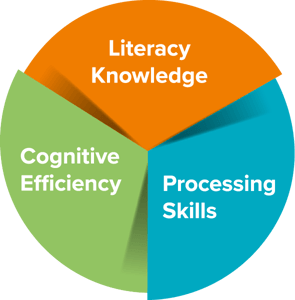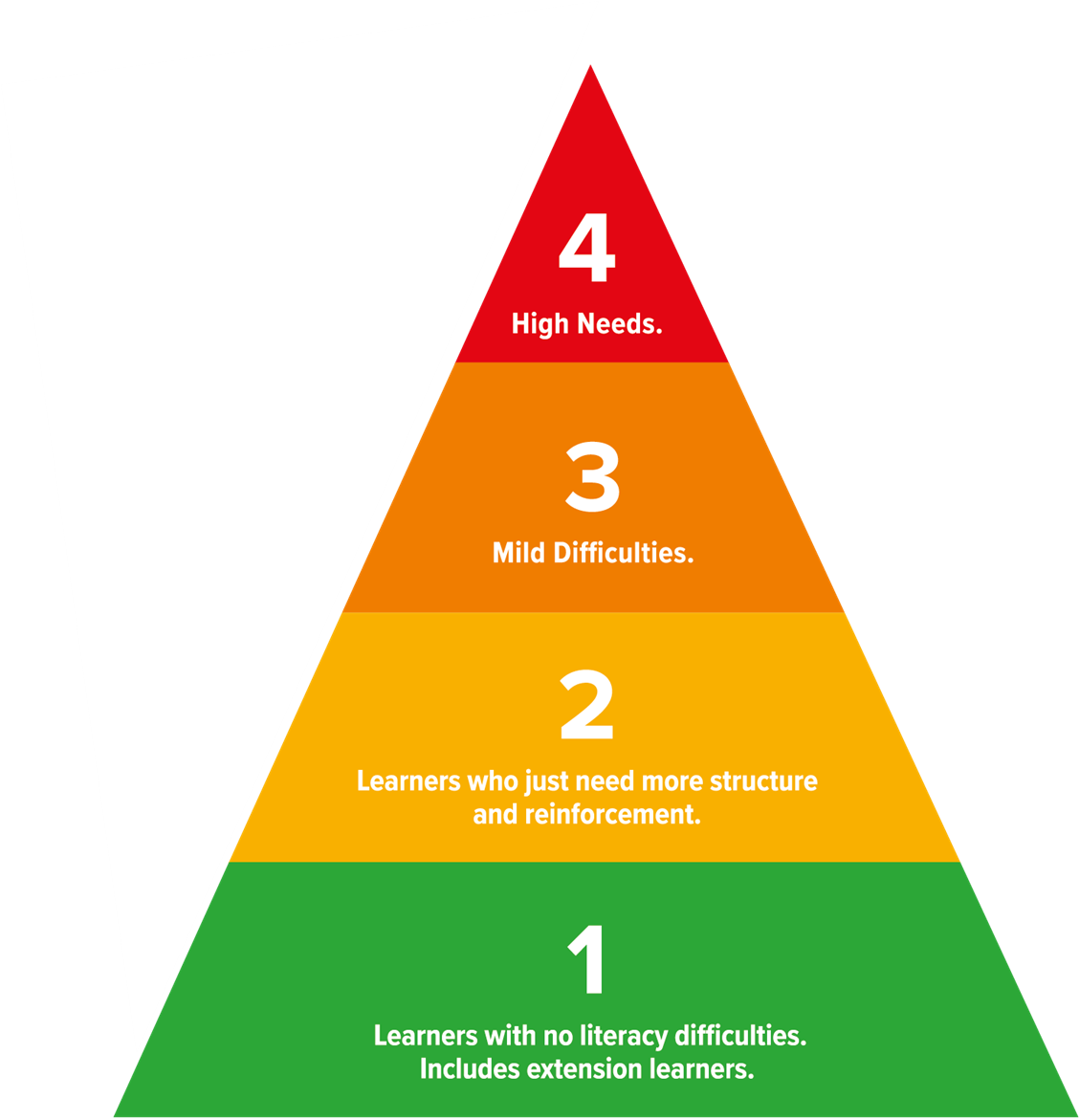
StepsWeb enables every learner to succeed by providing an approach which is:
How much extra reinforcement each learner needs. Beware – we often underestimate this!
Whether the learner needs in-class support, withdrawal or specialist tutoring.
What supporting resources are needed.
Tier 1 learners have no particular literacy issues. They are not struggling, but all learners benefit from a structured, varied approach which builds the processing skills involved in literacy, as well as covering the literacy content itself.
These learners do not need to be on the workbook courses. They will use Steps as a general support, to enable them to progress quickly and enjoyably, at their own individual speed, and to focus on areas which are particularly relevant to them.
Tier 1 learners may be following one of the set courses, which include grammar, comprehension and vocabulary building. They may also enter their own individual lists, or be doing topic/subject lists set by their teacher.
Steps can be used for extension for able learners needing a challenge!
Tier 2 learners are learners who are not particularly behind, but they are learners who may need a little bit extra. These learners will benefit from extra time on the computer (or at home on Steps) to ensure that they do not fall behind.
Class teachers may prioritise extra time on class computers, or recommend to parents that learners do a bit extra for homework. These learners may do more of the printable activities from Steps. They do not need to be on the workbook courses. However, there is no reason why the workbooks should not be used if they fit into the class routine. All learners benefit from the extra structure and reinforcement.
Tier 2 learners may be following one of the set courses, which include grammar, comprehension and vocabulary building. They may also enter their own individual lists, or be doing topic/subject lists set by their teacher.
Tier 3 learners are those who have been identified as having relatively mild difficulties. They may be up to a year behind their peers. These learners should be on the workbook courses, or using Steps to support a similarly structured remedial literacy course.
Tier 3 learners are likely to benefit from some form of withdrawal, although this may be in relatively large groups because they don’t need very high levels of teacher support. However, it is important to monitor these learners closely. The most common difficulty in schools is underestimating a learner’s needs and not providing enough structure and reinforcement.
Tier 4 learners have moderate to high needs. They may be dyslexic or have other processing difficulties, including developmental delays. These learners need to be in small groups (ideally no more than 3 learners) and a small proportion may need individual tuition for a period.
These learners need to be on the workbook courses, ideally supported by the game/activity resources (Schools Gameset Pack materials). This is because learners in this category have processing difficulties, including weaknesses in aspects such as phonological awareness, visual perception and memory. They need considerable reinforcement and this is often best provided through games and hands-on activities.
The Schools Gameset Pack provides a huge range of games and activities which focus on phonological awareness, language processing and memory. They also build phonic and orthographic knowledge and an awareness of word families.
Caution: One of the biggest mistakes with these learners is moving too fast and not checking to ensure that knowledge/skills are being retained! Each learner has to move at his/her own pace!
.png)
Research suggests that up to 40% of learners are likely to struggle with literacy if the teaching approach does not include the right amount of structure and reinforcement.
Some of these learners will be dyslexic or have similar difficulties (generally Tiers 3 or 4), but many have no identifiable learning difficulty – they just need more structure (Tier 2).
The problem comes when we concentrate too much on Tiers 3 and 4, and not enough on Tier 2. Many of these Tier 2 learners fall through the gaps at an early stage and they can easily become your Tier 3 and 4 learners!
When you start to work with a struggling learner, look at all aspects of their learning and make a judgement.
Is this a Tier 3 or Tier 4 learner?
Place your learner in the chosen tier and monitor progress for the first couple of weeks. If learning is being absorbed (and retained), it’s likely that your learner is on the correct tier.
If you’ve put your learner on Tier 3 and they’re not progressing, move them to Tier 4. Likewise, if you’ve placed them in Tier 4 and they’re making very good progress, consider moving them down to Tier 3 – but only once you feel confident they can retain their progress.
Always move one tier at a time and monitor progress – ideally for several weeks before making each change.
Possible problems
The biggest mistake is to take a Tier 4 learner who has been making good progress and drop them back into Tier 1. Often, you can lose progress as quickly as it was gained!

When you’ve been working with a high needs learner and are happy with their progress, consider dropping that learner back to Tier 3. Monitor progress on Tier 3 until you are confident that gains have been sustained. Then consider dropping the learner back to Tier 2.
Bear in mind that this learner is unlikely to go back to Tier 1 entirely. If a learner has ever got to the Tier 4 stage, it’s unlikely that they were ever a Tier 1 learner. It’s far more likely that this learner will continue to need at least some additional support or reinforcement.


Sometimes it’s very obvious. The student is clearly failing and not coping in class.
At other times, it’s not quite that obvious.
The best strategy is to estimate the Tier you think is appropriate – refer to the notes on each Tier. Then place the learner in that Tier, but monitor their performance over 2-3 weeks.
This should be sufficient to tell you whether that learner can be moved down, or needs to be moved up.
Research shows that many learners (approximately 40% of learners) particularly need a structured approach to literacy.
If we can provide a research-based, structured approach which meets the needs of these learners from the beginning, it is realistic to expect that we can stop many of them becoming our ‘high needs’ learners further down the track.
Don’t wait until they fail and then try to fix them! Stop them falling through the gaps in the first place.
By providing every learner with a research-based, structured approach to literacy. Ideally, this should be an approach which enables every learner to progress at his or her own speed and level.
By identifying (as early as possible) those learners who do need a bit more reinforcement. In other words, find your Tier 2 learners as soon as you can!
If you are able to identify your Tier 2s at this point, you can stop many of them becoming your Tier 3s and Tier 4s.
Email: info@stepsweb.com